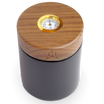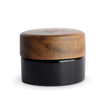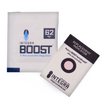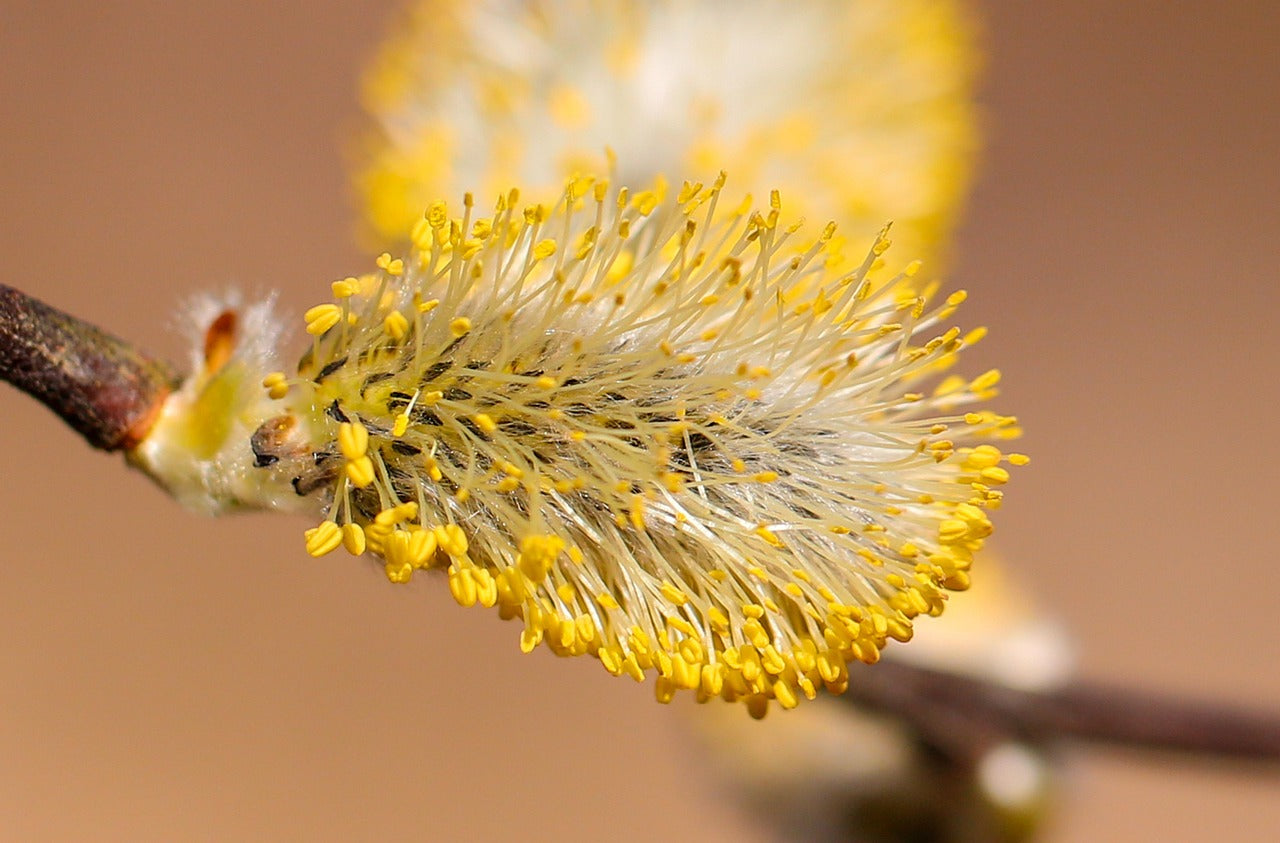Table of Contents
Introduction
Willow bark has earned its reputation over thousands of years as a trusted source of natural pain relief and inflammation support. Known as “nature’s aspirin,” it contains salicin—a compound that the body metabolizes into salicylic acid, the same active metabolite found in many over-the-counter medications. But while teas and tinctures are the traditional routes of consumption, vaporizing willow bark offers a lesser-known, but highly effective and fast-acting method for delivering its benefits.
This guide explores how to use willow bark in a modern vaporizer. We’ll cover how it works, what to expect, how to prepare it correctly, and what safety considerations to keep in mind. Whether you’re looking for relief from tension headaches, muscle soreness, or general inflammation—without the gastrointestinal discomfort often associated with pills—this article provides everything you need to vaporize willow bark effectively and safely.
1. What Is Willow Bark?
Willow bark comes from the branches of various Salix species, most notably white willow (Salix alba), and has a rich medicinal history across many cultures. The ancient Egyptians used it for fevers, the Greeks for inflammation, and Native Americans for pain and discomfort. Its fame lies in its high salicin content—a natural precursor to salicylic acid, which inspired the development of aspirin in the late 19th century.
In addition to salicin, willow bark also contains a synergistic blend of other phytochemicals, such as:
- Flavonoids – antioxidants that help reduce oxidative stress
- Tannins – astringent compounds with tissue-toning and antimicrobial action
- Polyphenols – support vascular and immune system function
Traditionally, willow bark is brewed as a tea or processed into tinctures, but not everyone tolerates the taste or gastrointestinal impact of oral consumption. Vaporization, as we’ll see, bypasses the stomach entirely and delivers the compounds directly to the bloodstream via the lungs.
2. Active Compounds and Therapeutic Effects
The therapeutic effects of willow bark come from a combination of salicin and several supporting plant compounds. When vaporized at the appropriate temperature, some of these can be absorbed efficiently through the lungs, providing rapid and targeted relief—especially useful for acute tension or inflammation.
Key active constituents:
- Salicin: This glycoside is converted in the liver into salicylic acid, which has well-documented anti-inflammatory and analgesic effects. It’s considered gentler on the body than aspirin and produces fewer gastric side effects.
- Flavonoids: Compounds such as luteolin and apigenin act as antioxidants and moderate inflammation, supporting recovery and immune resilience.
- Polyphenols: These compounds may reduce free radical damage and support vascular health, especially during physical stress.
Not all of these constituents are volatile, but the lighter, vapor-active compounds—especially flavonoids and smaller salicylate derivatives—can be delivered effectively with a quality vaporizer and the right technique.
3. Why Vaporize Willow Bark?
While teas and tinctures remain popular, vaporizing willow bark has its own distinct benefits—particularly for people looking to avoid the drawbacks of oral ingestion. Here's why more herbal users are exploring this delivery route:
Main advantages of vaporizing willow bark:
- Rapid onset: Inhalation bypasses digestion, allowing salicin derivatives to reach the bloodstream faster than tea or capsules—usually within 1–5 minutes.
- Clean experience: Vapor avoids the astringency of tea and the potential gut irritation associated with long-term salicylate intake.
- Precise control: You can titrate your dose gently, stopping after just a few inhales once relief is felt—something that’s not possible with tea or pills.
- No additives: You’re inhaling only the plant—no synthetic binders, sugars, or fillers.
Vaporizing willow bark is particularly well-suited for:
- Neck, jaw, or shoulder tension
- Low-grade headaches or postural fatigue
- Mild joint discomfort after physical strain
For a related herb with vapor benefits focused on emotional and digestive calm, see our guide on vaporizing chamomile.
4. Ideal Temperature and Herb Preparation
Willow bark is woody and fibrous, so effective vaporization depends on both proper preparation and temperature control. Most active compounds are released at moderate to high temperatures, but combustion must still be avoided.
Best vaporization temperature range:
| Temperature (°C) | Expected Effect |
|---|---|
| 160–170 | Mild tension relief, subtle aromatic compounds |
| 170–185 | Balanced extraction of salicin and flavonoids |
| 185–195 | Maximum vapor density, full pain-relief potential |
Herb preparation tips:
- Use shredded or coarsely ground bark – whole bark strips don’t vaporize evenly
- Ensure it is completely dry – moisture inhibits vapor release and causes harshness
- Grind before use using a metal grinder; avoid plastic as salicylates may degrade surfaces
- Pack loosely – allow airflow to circulate through the bowl
Good airflow, correct dryness, and steady heat are essential for a comfortable, effective session. In the next section, we’ll look at how much to use and when it works best.
5. Dosing Guidelines and Best Timing
Because willow bark is not a stimulant or psychoactive herb, its effects tend to be subtle, cumulative, and body-focused. For best results, vaporize it intentionally, paying attention to how your body responds over time. Less is often more.
Recommended dosage:
- Beginner dose: 0.05–0.1 grams (start here for first-time users)
- Standard dose: 0.1–0.15 grams for moderate relief
- Maximum dose: Up to 0.2 grams if you're experienced and comfortable with its effects
Willow bark vapor can be taken in 3–5 slow, controlled draws spaced out over 5–10 minutes. Watch for signs of bodily release—such as loosening muscles, slowed breath, or diminishing head tension—as indicators that your dose is effective.
Best time to use:
- Midday or afternoon: After extended sitting, screen fatigue, or physical effort
- Early evening: To ease accumulated muscular tension
- Before low-impact recovery sessions: Like yoga, stretching, or sauna use
Although willow bark is not sedating, it’s best used in calming environments. Pair it with hydration and deep breathing to maximize comfort and absorption.
6. Safety, Interactions, and Contraindications
Willow bark is generally safe for short-term, responsible use—but it contains salicin, which means users must be aware of potential contraindications. If you’ve ever been told to avoid aspirin, be cautious.
Avoid vaporizing willow bark if you:
- Have an allergy to aspirin or other salicylates
- Take blood-thinning medication like warfarin
- Have bleeding disorders or a history of ulcers
- Are pregnant or breastfeeding
Use with caution if:
- You’re currently using NSAIDs (e.g., ibuprofen, naproxen)
- You have asthma (some forms are worsened by salicylates)
- You’re managing liver or kidney conditions
Although vaporization reduces the burden on your digestive tract, salicin still enters systemic circulation. It may interact with other medications affecting clotting, inflammation, or metabolism.
When in doubt, consult your healthcare provider—especially if you’re on chronic prescriptions. Willow bark is a potent herb, and clean use begins with informed choices.
7. Conclusion and Recommended Devices
Vaporizing willow bark brings ancient herbal wisdom into the modern wellness space—offering fast-acting, smoke-free relief for those seeking a natural alternative to synthetic painkillers or anti-inflammatory drugs. While teas and tinctures remain useful, vaporization introduces a new level of immediacy and precision, especially when dealing with muscle tension, soreness, or inflammation.
To get the most from willow bark:
- Source clean, dried bark from a trusted herbal supplier
- Grind coarsely and vaporize at 170–185°C for best extraction
- Use low doses and take slow, even draws
- Be mindful of aspirin sensitivities or medication interactions
If you're seeking a reliable, non-electric vaporizer for herbs like willow bark, we recommend:
- Vapman – Ideal for microdosing and delicate temperature control. Flame-powered, compact, and perfect for refined herbal sessions.
- Lotus – Offers convection-driven performance and a clean vapor path without electronics—well-suited for dense botanicals like bark or root blends.
Whether you're a seasoned herbalist or a wellness explorer, vaporizing willow bark invites you to reframe your relationship with pain, presence, and natural relief—one breath at a time.
About the Author

Michael, Founder & CEO of INHALE Vaporizers
Driven by a passion for clean, mindful vaporization, Michael leads INHALE in crafting elegant and sustainable tools like the Vapman and Lotus. With a deep focus on function, safety, and herbal authenticity, INHALE helps people reconnect with the power of plants—one breath at a time.
📩 support@nowinhale.com | Contact us

















Leave a comment
All comments are moderated before being published.
This site is protected by hCaptcha and the hCaptcha Privacy Policy and Terms of Service apply.